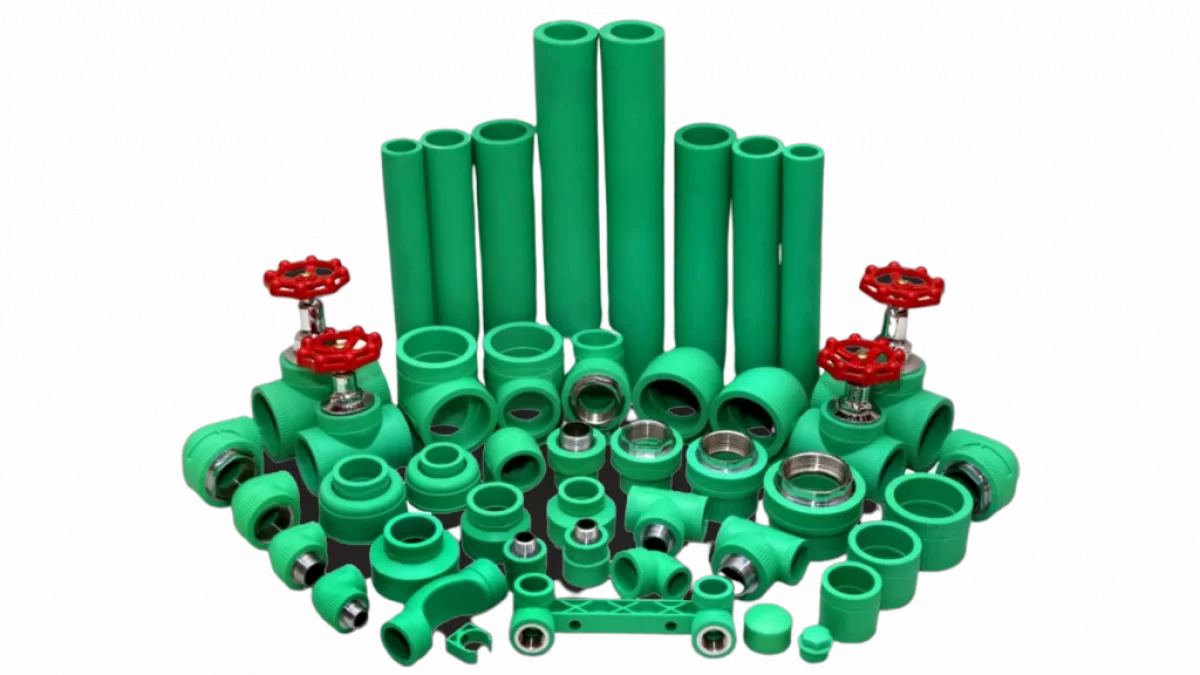Introduction
When it comes to plumbing solutions, the choice of piping material can significantly impact the longevity and efficiency of your system. Among the various options available, Ppr pipes (Polypropylene Random Copolymer) have emerged as a popular choice due to their durability, resistance to corrosion, and ease of installation. In this article, we will explore the best three durable PPR pipes built for long-term use, ensuring that your plumbing system remains reliable for years to come.
What are PPR Pipes?
PPR pipes are made from a type of plastic known as polypropylene, which is known for its strength and resistance to various chemicals. These pipes are widely used in both residential and commercial plumbing systems due to their lightweight nature and ability to withstand high temperatures and pressures. PPR pipes are also eco-friendly, making them a sustainable choice for modern plumbing needs.
Why Choose PPR Pipes?
Choosing PPR pipes for your plumbing system comes with numerous advantages:
- Durability: PPR pipes are designed to last for decades, making them a cost-effective solution in the long run.
- Corrosion Resistance: Unlike metal pipes, PPR pipes do not corrode, ensuring that your water supply remains clean and safe.
- Temperature Resistance: PPR pipes can handle high temperatures, making them suitable for hot water systems.
- Easy Installation: The lightweight nature of PPR pipes makes them easy to transport and install, reducing labor costs.
- Eco-Friendly: PPR pipes are recyclable, contributing to a more sustainable environment.
Top 3 Durable PPR Pipes
1. EEJIA PPR Pipe Series 1
The EEJIA PPR Pipe Series 1 is a top contender in the market, known for its exceptional durability and performance. This pipe is designed to withstand high pressure and temperature, making it ideal for both hot and cold water applications.
- Key Features:
- Material: Made from high-quality polypropylene random copolymer.
- Pressure Rating: Can handle pressures up to 25 bar.
- Temperature Range: Suitable for temperatures up to 95°C.
- Lifespan: Expected lifespan of over 50 years.
The EEJIA PPR Pipe Series 1 is perfect for residential plumbing, irrigation systems, and industrial applications. Its robust construction ensures that it can handle the demands of any plumbing system.
2. EEJIA PPR Pipe Series 2
Another excellent option is the EEJIA PPR Pipe Series 2, which offers enhanced features for those seeking a reliable plumbing solution. This pipe is designed for both hot and cold water systems, making it versatile for various applications.
- Key Features:
- Material: High-grade polypropylene random copolymer.
- Pressure Rating: Capable of withstanding pressures up to 20 bar.
- Temperature Range: Effective for temperatures up to 90°C.
- Lifespan: Designed to last over 50 years.
The EEJIA PPR Pipe Series 2 is ideal for residential and commercial plumbing, ensuring a steady flow of water without the risk of leaks or corrosion.
3. EEJIA PPR Pipe Series 3
The EEJIA PPR Pipe Series 3 is designed for those who require a high-performance piping solution. This pipe is engineered to provide maximum durability and efficiency, making it suitable for demanding applications.
- Key Features:
- Material: Premium polypropylene random copolymer.
- Pressure Rating: Can handle pressures up to 30 bar.
- Temperature Range: Suitable for temperatures up to 95°C.
- Lifespan: Expected lifespan of over 50 years.
The EEJIA PPR Pipe Series 3 is perfect for industrial applications, ensuring that your plumbing system remains efficient and reliable under high-stress conditions.
Comparison of the Best PPR Pipes
| Feature | EEJIA PPR Pipe Series 1 | EEJIA PPR Pipe Series 2 | EEJIA PPR Pipe Series 3 |
|---|---|---|---|
| Material | Polypropylene Random Copolymer | Polypropylene Random Copolymer | Polypropylene Random Copolymer |
| Pressure Rating | 25 bar | 20 bar | 30 bar |
| Temperature Range | Up to 95°C | Up to 90°C | Up to 95°C |
| Expected Lifespan | 50 years | 50 years | 50 years |
Installation Tips for PPR Pipes
Installing PPR pipes is a straightforward process, but following best practices can ensure optimal performance:
- Cutting: Use a pipe cutter for clean cuts to avoid any burrs that could affect the seal.
- Joining: Use a heat fusion method to join pipes, ensuring a strong and leak-proof connection.
- Support: Provide adequate support for the pipes to prevent sagging and stress on joints.
- Testing: After installation, conduct a pressure test to check for leaks before covering the pipes.
Maintenance of PPR Pipes
PPR pipes require minimal maintenance, but regular checks can help prolong their lifespan:
- Visual Inspection: Regularly inspect for any visible signs of damage or wear.
- Pressure Checks: Monitor the pressure in your plumbing system to ensure it remains within safe limits.
- Cleaning: Occasionally flush the system to remove any debris or buildup.
FAQ Section
1. What are the advantages of using PPR pipes over traditional metal pipes?
PPR pipes offer several advantages, including corrosion resistance, lightweight nature, and ease of installation. They also have a longer lifespan and are more eco-friendly compared to traditional metal pipes.
2. Can PPR pipes be used for both hot and cold water systems?
Yes, PPR pipes are suitable for both hot and cold water applications, making them a versatile choice for various plumbing needs.
3. How long do PPR pipes last?
PPR pipes are designed to last for over 50 years, making them a durable and cost-effective solution for plumbing systems.
Conclusion
In conclusion, choosing the right PPR pipes is crucial for ensuring the longevity and efficiency of your plumbing system. The EEJIA PPR Pipe Series 1, Series 2, and Series 3 stand out as the best durable options available, each offering unique features to meet different needs. By investing in high-quality PPR pipes, you can enjoy a reliable plumbing system that will serve you well for decades. For more information on our products, visit EEJIA today and make the smart choice for your plumbing needs! We cover everything in one place—don’t miss out on the latest insights.
